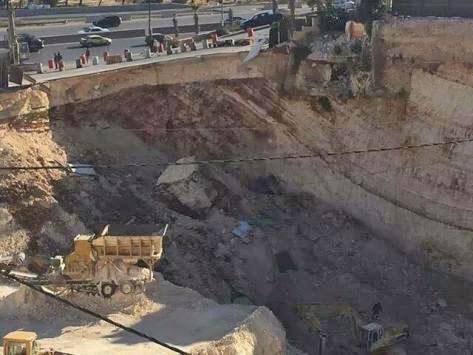You are here
Water flow resumes in areas of Amman after carrier damage
By Hana Namrouqa - Sep 07,2017 - Last updated at Sep 07,2017
AMMAN — Regular pumping of water to subscribers in north and northwest Amman resumed on Thursday, after authorities replaced a main carrier damaged during construction works, according to an official.
The main carrier ruptured on Tuesday night when a contractor was carrying out construction work on a plot of land behind Majdi Mall near the University of Jordan area, according to the Jordan Water Company (Miyahuna).
"A street near the construction site collapsed, thus severely damaging the pipeline. Miyahuna teams worked since Tuesday to install a replacement carrier and resume pumping to several neighbourhoods supplied by the pipeline," Miyahuna CEO Ghazi Khalil told The Jordan Times.
The 40cm-diametre main pipeline transfers water from Dabouq pumping station to Um Al Shujeirat reservoir near the area of the University of Jordan, according to Miyahuna.
"The pipeline transfers 800 metres of water per hour. It supplies subscribers in Jubeiha, Dahyet Al Rashid, Yajouz, Jordan Street and Um Al Shujeirat areas," Khalil said.
The company’s teams completed construction on a substitute for the main carrier on Thursday dawn, Khalil said.
"Water supply to subscribers in the area didn't completely cease when the main was damaged as the company resorted to alternatives. However, supply wasn't as efficient…," Khalil highlighted.
He noted that the contractor will bear the costs of reconstructing the pipe.
In a statement, Miyahuna said that large amounts of water were lost when the pipe was damaged, underlining that it also disrupted the water distribution programme.
Under the water distribution programme, households across the Kingdom receive water once during a certain period, usually between 7 to 10 days on a rotating basis.
Scarce water resources in the country compelled the Kingdom to initiate the programme in the early 1980s to conserve limited resources whilst ensuring a sustainable supply of water.
Related Articles
AMMAN — The Jordan Water Company (Miyahuna) on Thursday suspended pumping from two major carriers running along the airport road after a str
AMMAN — Water supply in Zarqa Governorate on Sunday remained suspended due to damages to the main carrier supplying the country's third larg
AMMAN — Pumping of drinking water to Muadi Village in the Central Jordan Valley resumed on Monday afternoon, after fixing a rupture to the m















